Gray-Scott Model at F 0.0060, k 0.0410
These images and movie demonstrate the behavior of the Gray-Scott reaction-diffusion system with σ=Du/Dv=2 and parameters F=0.0060, k=0.0410.
Proto-spiral seeds, and wavefronts that are smooth at first (as seen in the first 20 seconds) but quickly become irregular and fragmented. Spirals never get to be very big, new seeds are created from the breaks in the wavefronts, and opposite pairs of spiral seeds annihilate.
This pattern kept going for 1,140,000 tu, with the spiral centers continually moving and changing in quantity, then abruptly ended. Other patterns last as little as 10,000 tu, and a few produce a single linear wavefront like that seen here. (glossary of terms)
 increase F increase F
 | |||
 decrease k  |
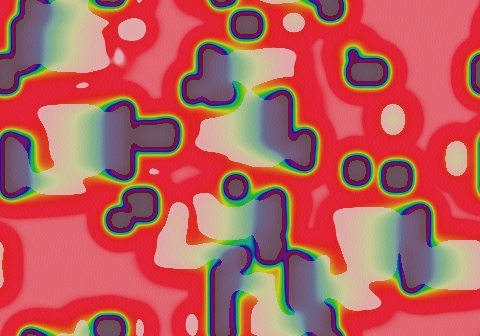
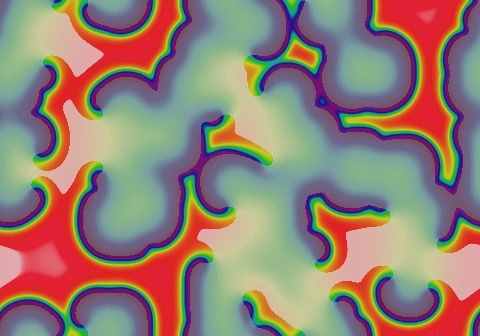
|
15 frames/sec.; each fr. is 19 iter. steps = 9.5 tu; 1801 fr. total (17,109 tu) |  increase k 
|
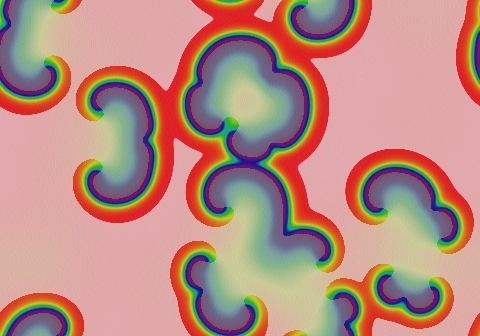
|
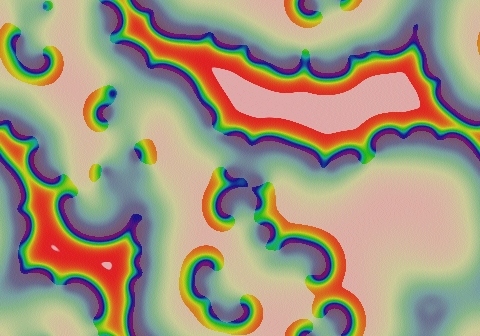
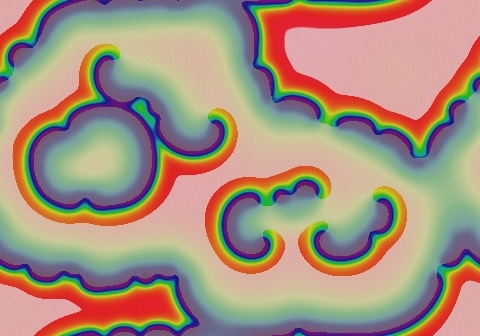
| ||

 |
In these images:
- Color indicates level of u, ranging from purple (lowest u values) through blue, aqua, green, yellow and pink/red (highest u values)
- Areas where u is increasing are lightened to a light pastel tone; where u is decreasing the color is vivid.
- In areas where u is changing by less than ±3×10-6 per tu, an intermediate pastel color is seen. This includes areas that are in steady state or equilibrium.
''tu'' is the dimensionless unit of time, and ''lu'' the dimensionless unit of length, implicit in the equations that define the reaction-diffusion model. The grids for these simulations use Δx=1/143 lu and Δt=1/2 tu; the system is 3.2 lu wide. The simulation meets itself at the edges (periodic boundary condition); all images tile seamlessly if used as wallpaper.
Go back to Gray-Scott pattern index
This page was written in the "embarrassingly readable" markup language RHTF, and was last updated on 2015 Nov 07.
 s.27
s.27